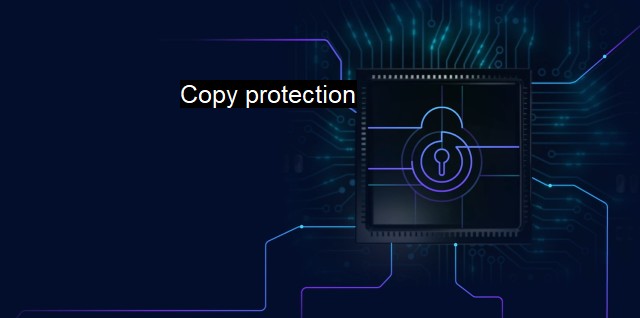What is Copy protection?
The Importance of Copy Protection in Cybersecurity: Methods and Technologies Explained
Copy Protection is a security mechanism that prevents digital content, such as software and digital media, from being replicated or shared illegally. In the age of the internet, digital piracy has become rampant, leading to significant losses for content creators and manufacturers. As a result, copy protection has become one of the most crucial measures in cybersecurity and antivirus programs.Copy protection methods vary depending on the type of content being protected, but they generally fall under two categories: hardware-based and software-based protection. Hardware-based protection involves the use of special physical devices, such as dongles or smart cards, that must be present and active in the computer for the protected content to run. On the other hand, software-based protection uses cryptographic keys, obfuscation, or other computational algorithms to encrypt or scramble the content so that it only works with authorized devices or software.
The most common form of copy protection is through digital rights management (DRM), which is a set of technologies used to control content access and usage rights. DRM works by embedding digital rights information in the content itself, which is encrypted and verified during playback or usage. Some of the most popular DRM schemes include PlayReady, Widevine, and FairPlay.
Copy protection can also include various anti-piracy measures, such as watermarking and fingerprinting, which enable content to be traced back to the original source. Watermarking works by adding an invisible digital mark to the content, which is detectable only by some specialized software, whereas fingerprinting uses a unique identifier to track each copy of the content. These methods help identify unauthorized sharing and distribution of the content and can mitigate the financial loss of the content creators.
From a cybersecurity and antivirus perspective, copy protection defends against malicious software that aims to replicate and distribute copyrighted material unethically, which is also frequently a source of malware attacks. The practice ensures that malicious or pirated software cannot run on protected systems in any way hijacking and syncing critical data stealthily.
There is no perfect copy protection method, and many high-profile games, movies, and media have you heard that have fallen victim to piracy. complex and versatile copy protection to ensure it’s user and purchase adherence has amended reliable protection mechanisms where companies invest inadequate firmware bonding to recognize and optimize the trail of its wanted information.
Copy Protection technology also limits duplication of digital content to unauthorized devices, mitigating the likelihood of compromises from external threats. It strengthens data life and protection against the growing number of counterfeit software that is impossible to counter once it slices into the system’s base network architecture legitimizing absolute know-how tie-ups.
cybersecurity and antivirus protections affirm the measures that safeguard systems’ accessibility to data from legit sources. Copy protection restricts unauthorized parties from viewing digital content that prompts uninterrupted updates combating online threats comprising an exhaustive litany of transformational assaults. Therefore, copy protection should be of utmost essentials for any unique digital services or online products that are frequently used, ensuring damage control measures and damage isolations are sanctimonious, preventing imperil supply by checking the approval and licenses.`

Copy protection FAQs
What is copy protection in the context of cybersecurity?
Copy protection refers to the measures put in place to prevent unauthorized copying or distribution of digital content, such as software, music, and movies. It is an important aspect of cybersecurity as it helps to protect intellectual property rights and prevent piracy.Why is copy protection important in antivirus software?
Copy protection is important in antivirus software as it ensures that the software is not easily replicated or tampered with. This helps to prevent the distribution of counterfeit or malicious copies of the software, which could compromise the security of the user's computer.What are some common techniques used for copy protection?
Some common techniques used for copy protection include encryption, digital watermarks, and hardware dongles. Encryption involves using algorithms to scramble data, while digital watermarks involve embedding hidden information in digital content to identify its source. Hardware dongles are physical devices that must be attached to a computer to allow access to software.How effective is copy protection in preventing piracy and unauthorized copying?
Copy protection can be effective in preventing piracy and unauthorized copying, but it is not foolproof. Skilled hackers can often find ways to bypass copy protection measures, and some users may be unwilling to purchase content that is too heavily restricted. However, copy protection can still act as a deterrent and make it more difficult for individuals to copy and distribute digital content without permission.| | A | | | B | | | C | | | D | | | E | | | F | | | G | | | H | | | I | | | J | | | K | | | L | | | M | |
| | N | | | O | | | P | | | Q | | | R | | | S | | | T | | | U | | | V | | | W | | | X | | | Y | | | Z | |
| | 1 | | | 2 | | | 3 | | | 4 | | | 7 | | | 8 | | |||||||